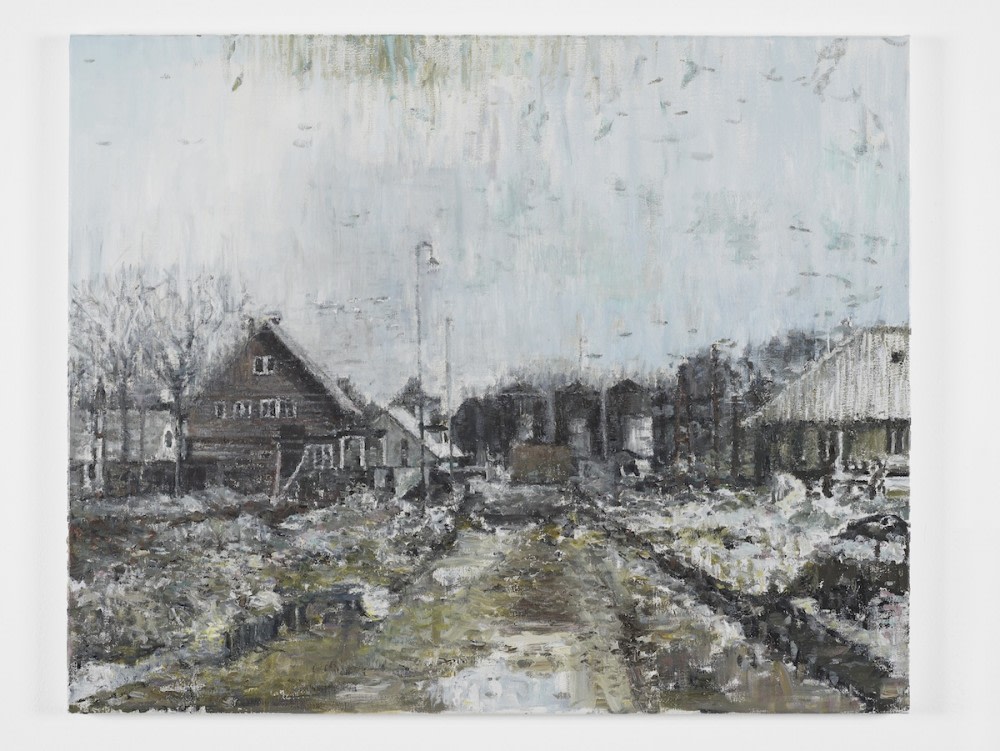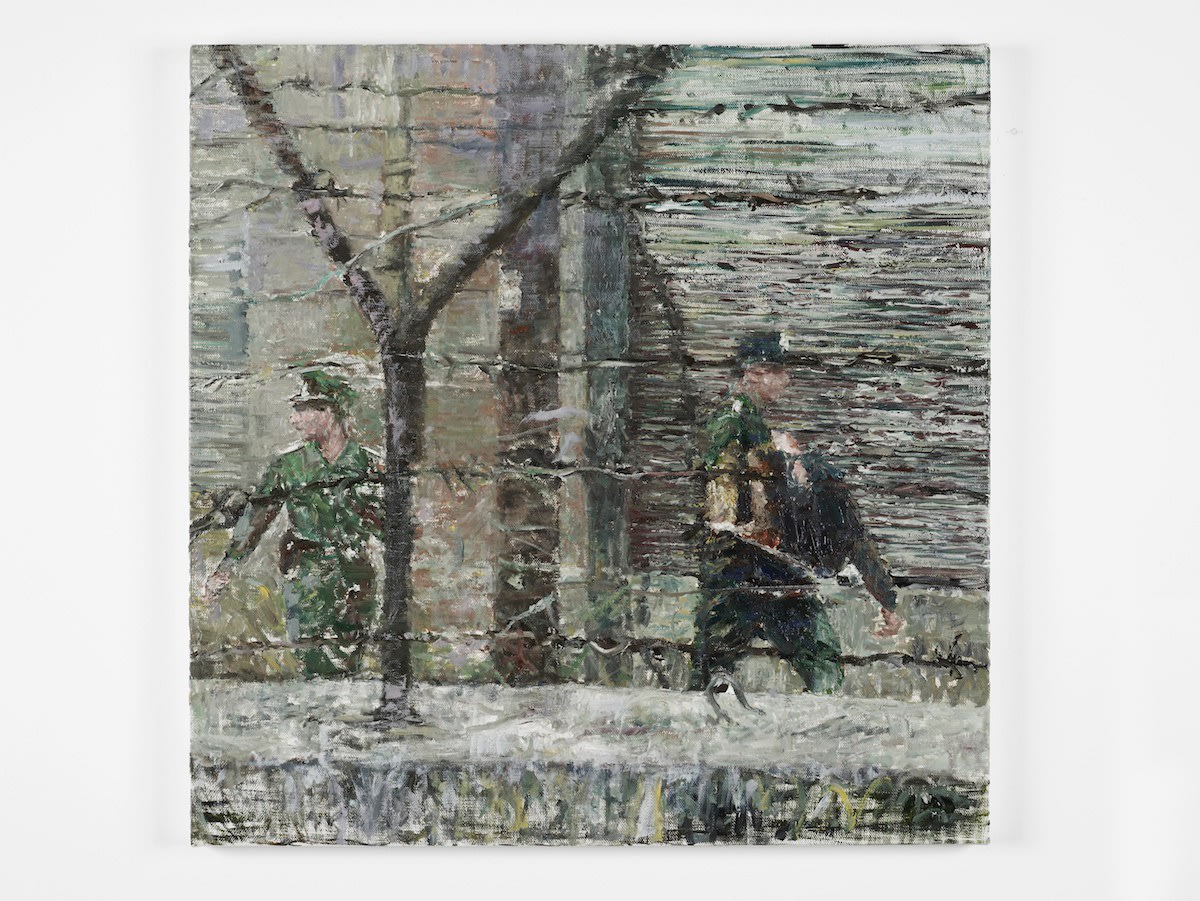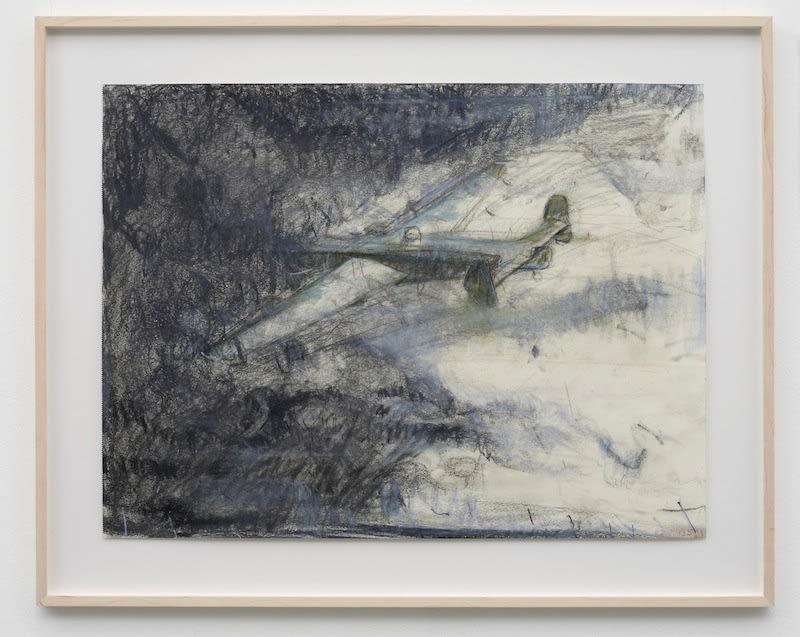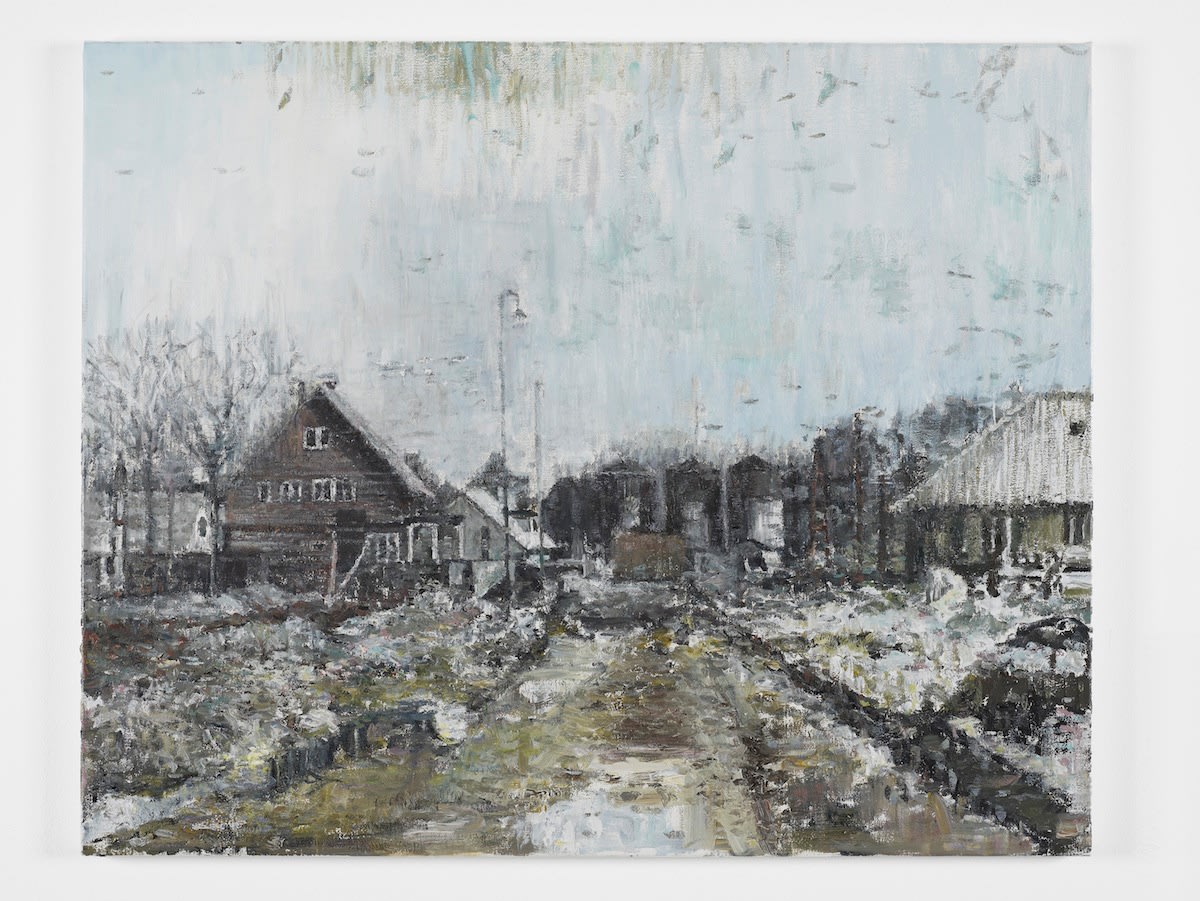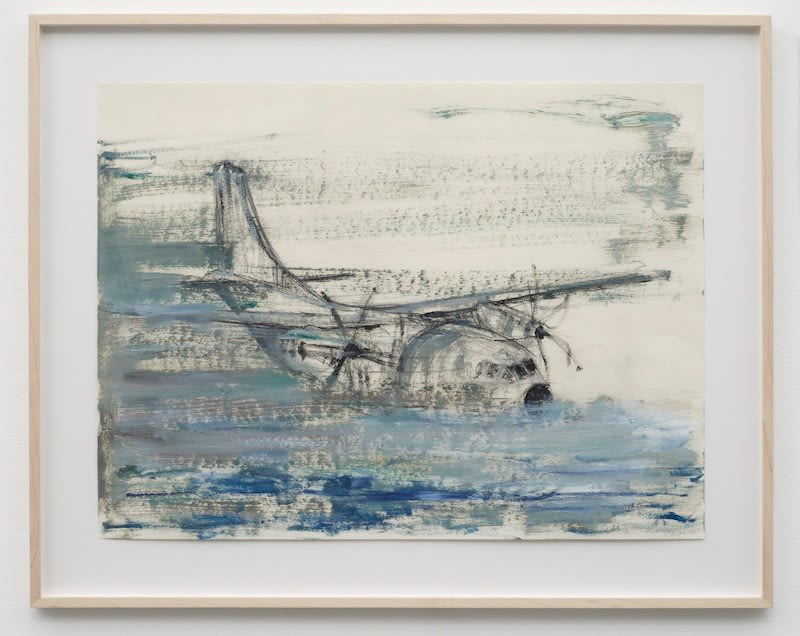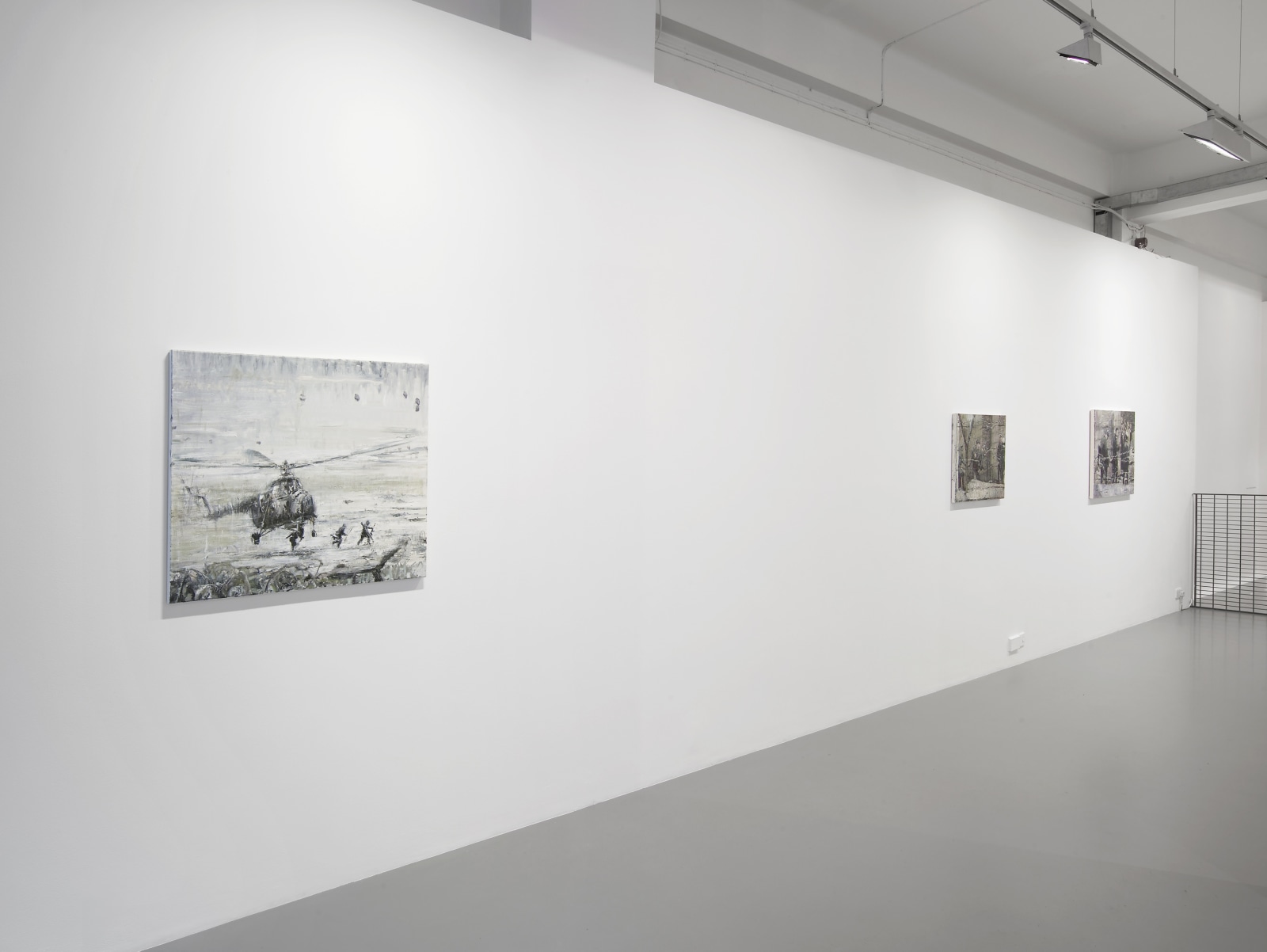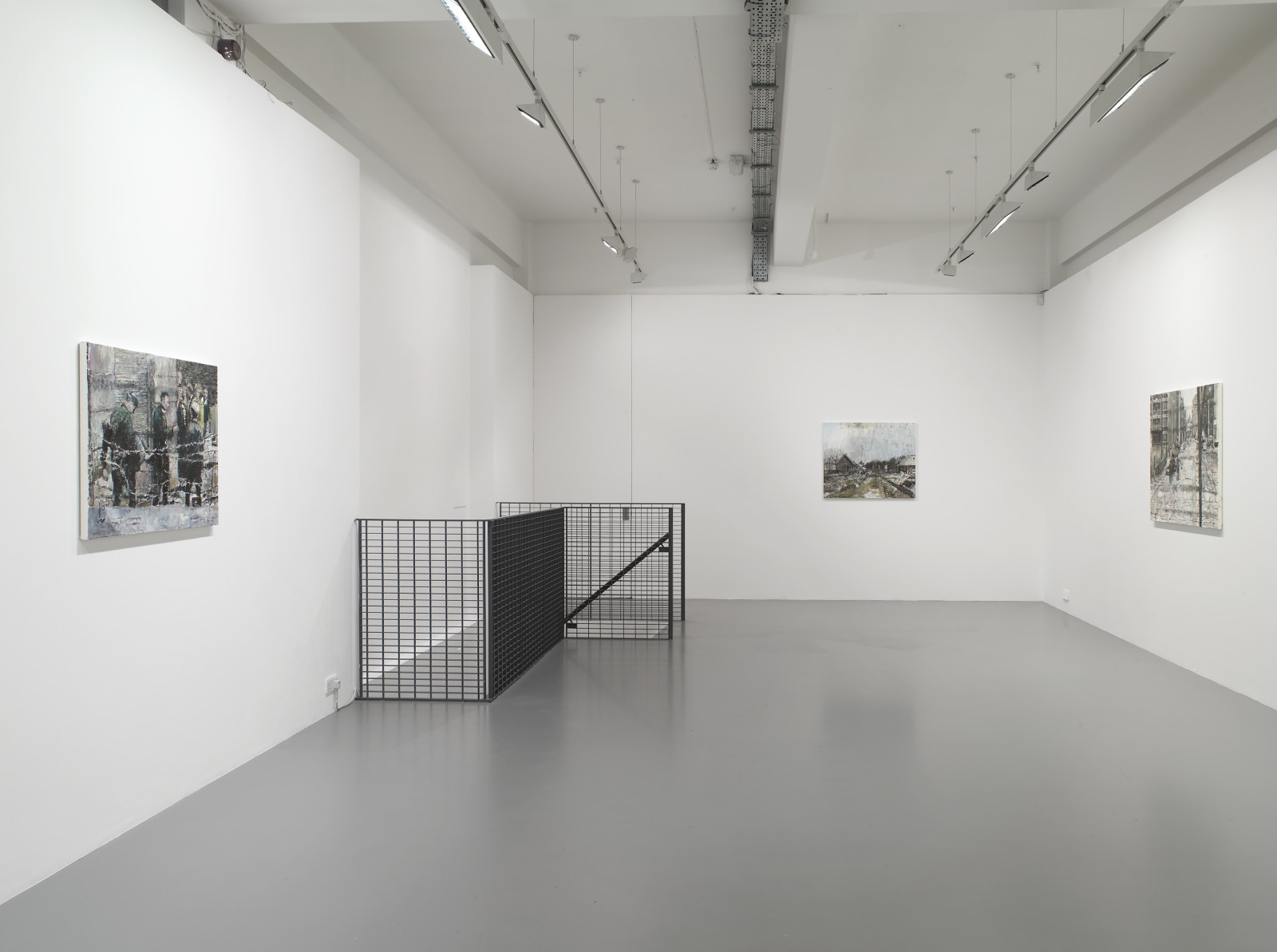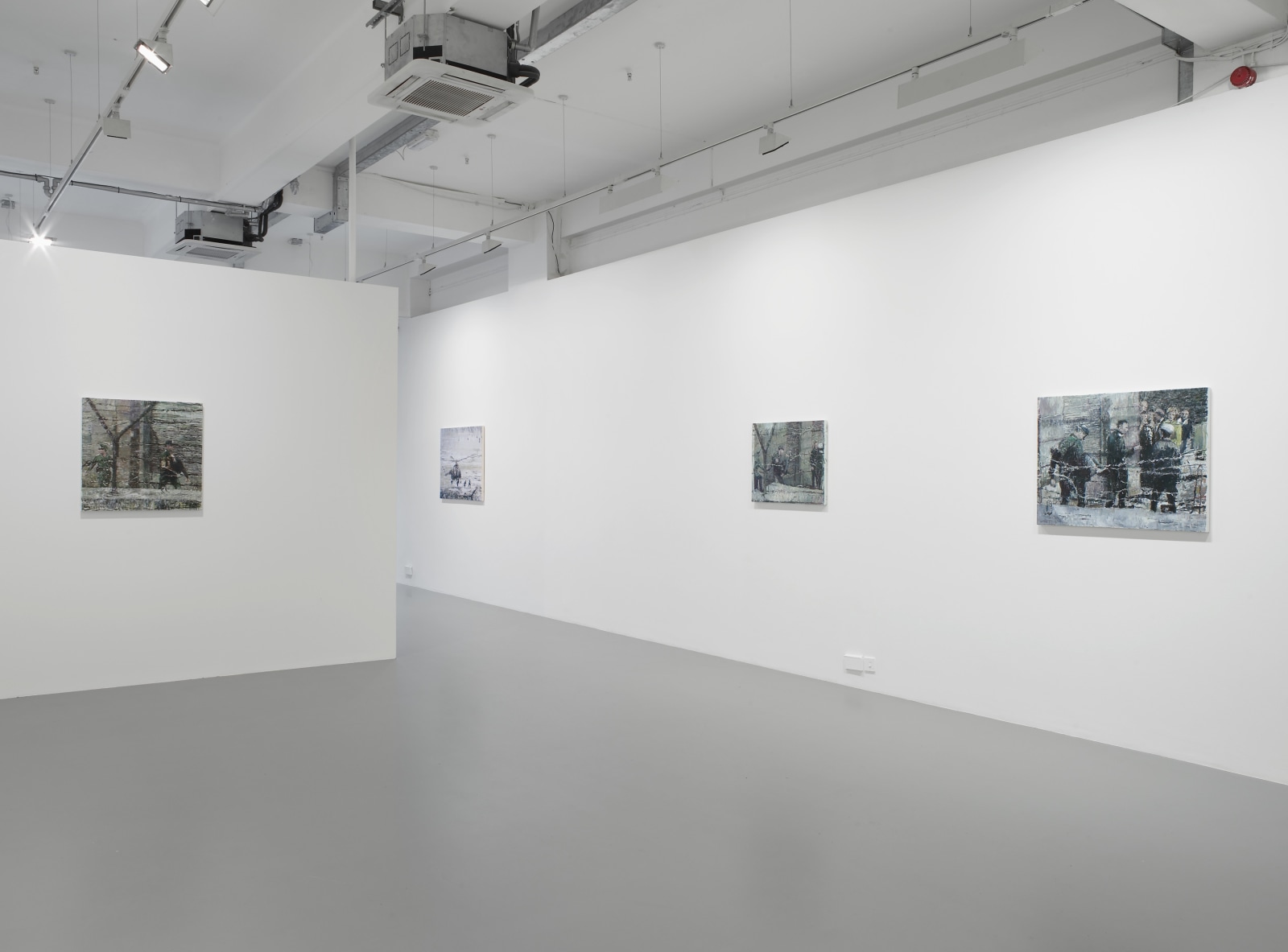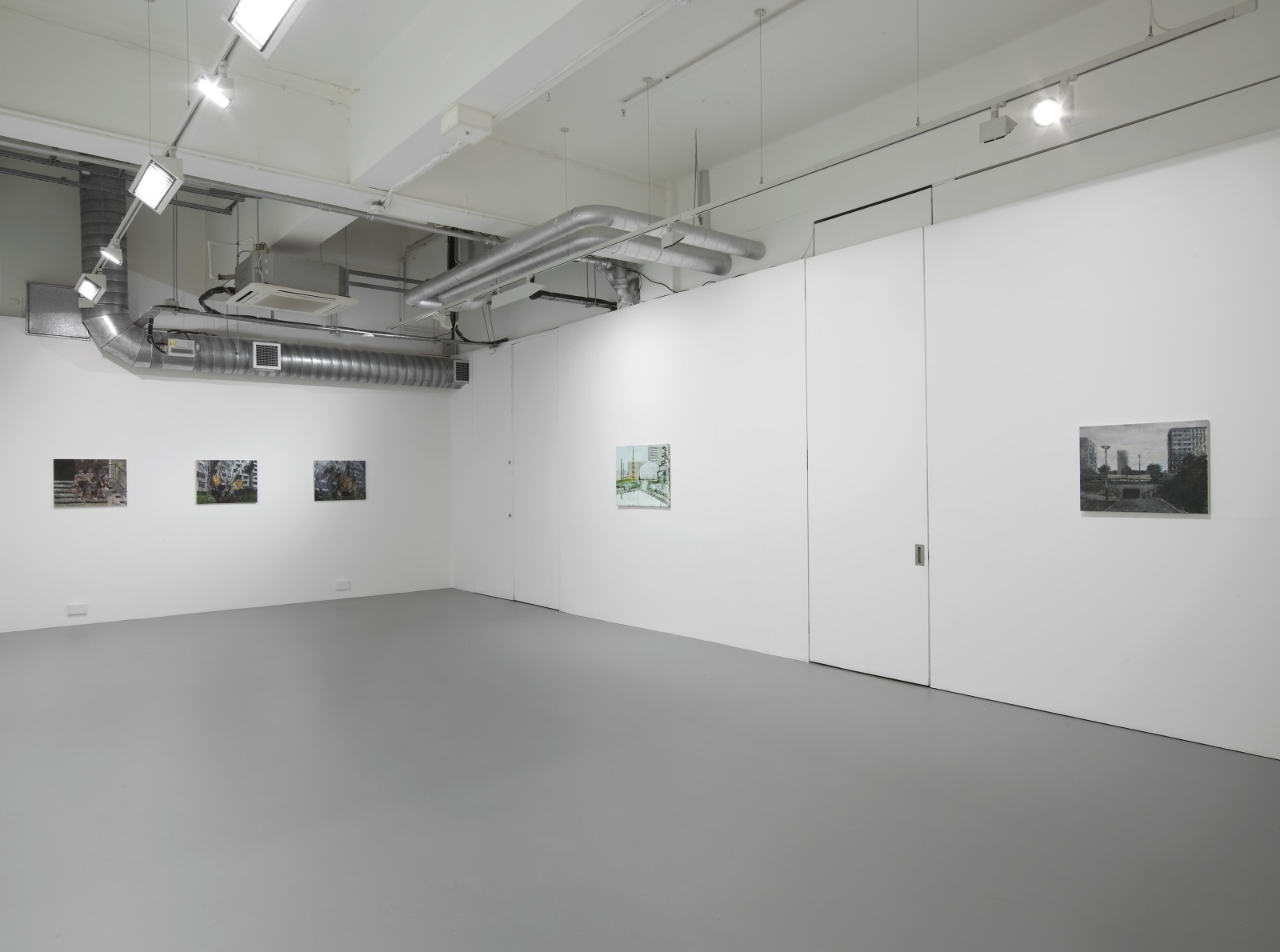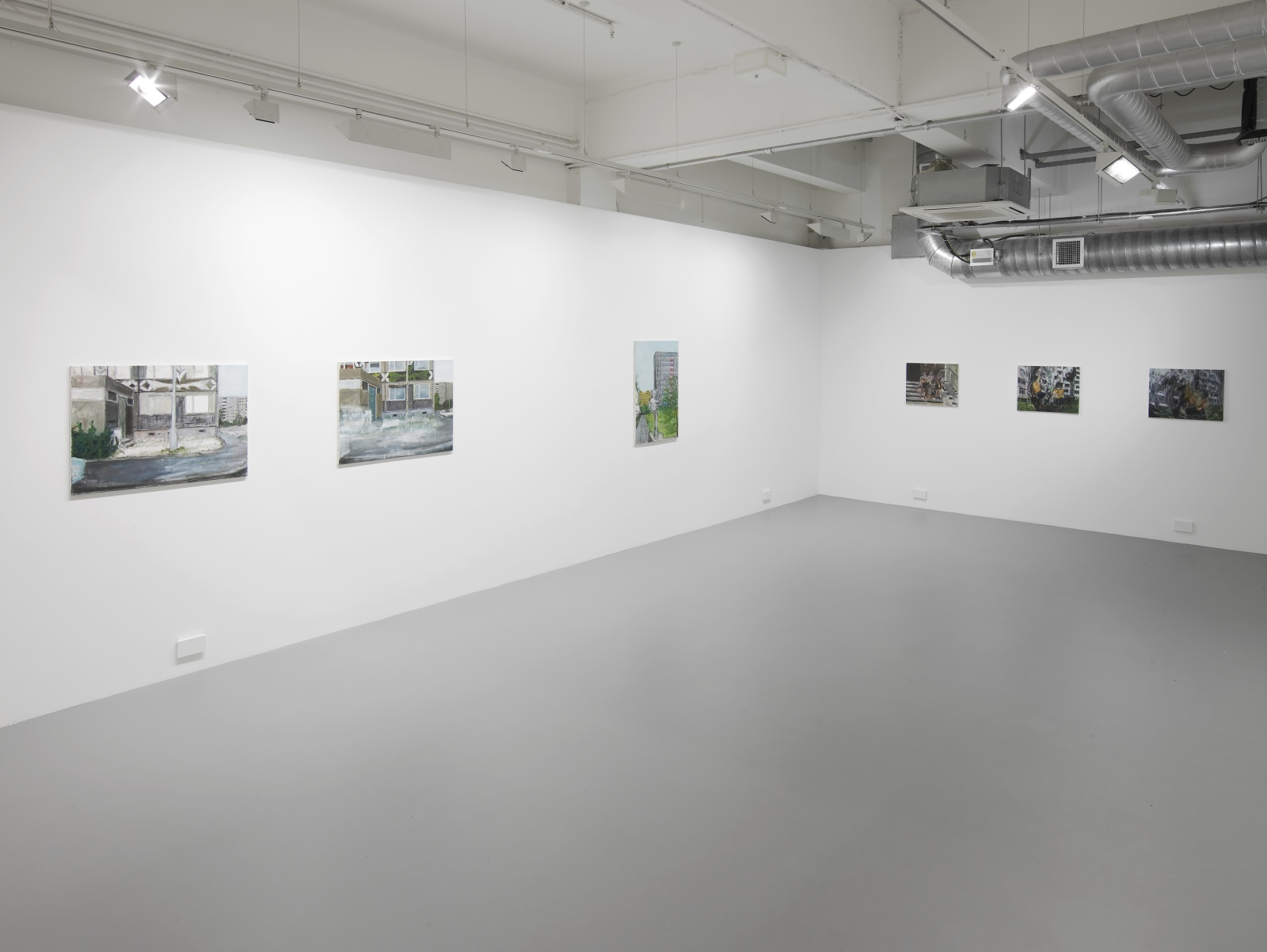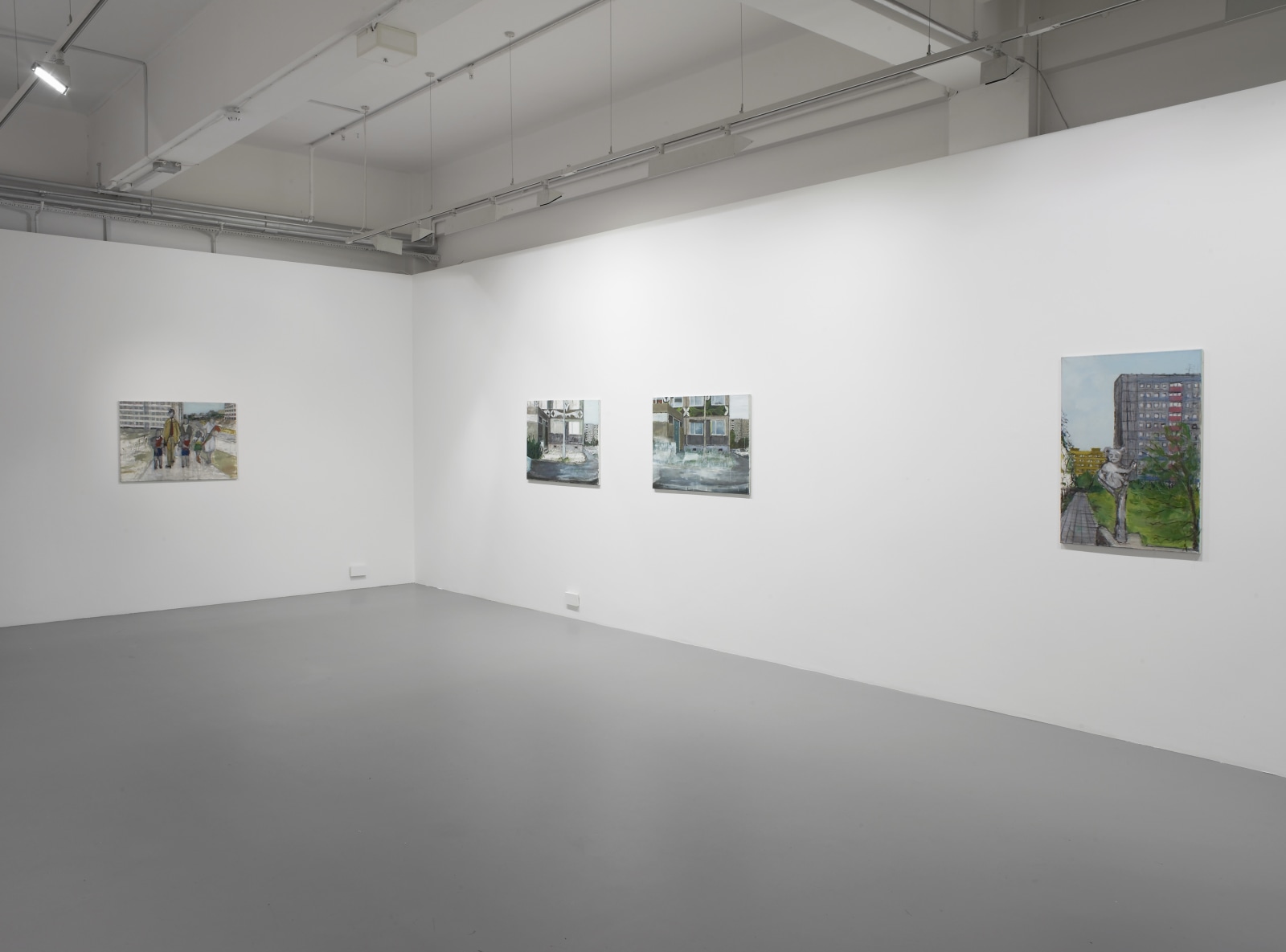Overview
For her first solo exhibition with Pilar Corrias Gallery, German artist Sabine Moritz presents a new set of paintings alongside an older series of works, which together reflect upon scenes and personal recollections of a childhood spent in East Germany around the period of the Cold War.
Moritz's work is a manifestation of memory and release. She returns repeatedly to specific scenes from her childhood that have become indelibly imprinted on her psyche. Some works are created entirely from memory, while for others she interrogates the strength of her visual recollections by studying reportage photographs, newspapers, family album snapshots, and other found images. Her paintings portray the personal and collective history of, and the passing of, a period in time.
The first part of the exhibition includes a series of five new paintings, which examine an incident that occurred at the Berlin Wall on 17 August 1962. Two men from East Germany tried to climb over the Wall and one of them, Peter Fechter, was shot and later died - an occurrence for which nobody claimed responsibility. While the story was forcibly kept silent in East Germany, in West Germany it was reported fully. Despite not being witness to the event herself, Moritz collected various documents from both East and West Germany to depict both points of view in her paintings; yet never graphically depicting the violence or tragedy of the event. Moritz's handling of this specific occurrence acts as a reflection upon the fear and pressure she faced while growing up under the East German communist regime. The man's death also channels personal experiences from Moritz's childhood of loss and suppression of truth.
The painting Home (Gatersleben), portrays Moritz's first home in the East German village of Gatersleben, and is created from a found photograph of the house dating from the same period. It provides a bookend to the first part of the exhibition and acts as a marker towards the second part that presents older works from her Lobeda and Jena Düsseldorf series. The works from the first Lobeda cycle (1991-1992) are recollections of scenes from Moritz's childhood town of Lobeda, near Jena in East Germany, where she lived from 1973-81 in a concrete-slab housing estate. The images in the Jena Düsseldorf cycle (1992-94) are created from a combination of memories and photographs that capture places she knew before immigrating to West Germany in the mid-1980s. For Moritz the act of returning to Lobeda as subject matter in cycles, each time considering it through different documentary material, is key in reinforcing her original memories and stimulating her unconscious ones. The scenes in her paintings may be personal but her work also alludes to a broader collective history.
This wider history is reflected in a series of drawings depicting transport vehicles, such as ships, helicopters, and airplanes, used during wartime. Portrayed ambiguously, it is difficult to conclude whether this is a peaceful or hostile period of time. Without contextual reference points, these works move towards being timeless and placeless compositions. Moritz is also interested in the movements of these vehicles as military symbols, demarcating borders as they travel, but also as emotive vessels.
Sabine Moritz (b. 1969 in Quedlinburg, Germany) lives and works in Cologne. She started her studies at Hochschule für Gestaltung Offenbach (from 1989 to 1991) and completed her studies at Kunstakademie Düsseldorf (graduated 1994). Moritz has been widely exhibited in group and solo exhibitions in Düsseldorf, Brussels, Paris and London. In March 2014 she will have a large solo exhibition at Von der Heydt-Kunsthalle, Wuppertal. Selected solo exhibitions of Moritz's work include Concrete and Dust, Foundation de 11 Lijnen, Oudenburg (2013); Lobeda, Kunsthaus sans titre, Potsdam (2011). Selected group exhibitions include Faber-Castell International Drawing Award 2012, Neues Museum - Staatl. Museum für Kunst und Design, Nuremberg (2012); and The Good, The Bad & The Ugly, Cultuurcentrum Mechelen, Mechelen (2010).

